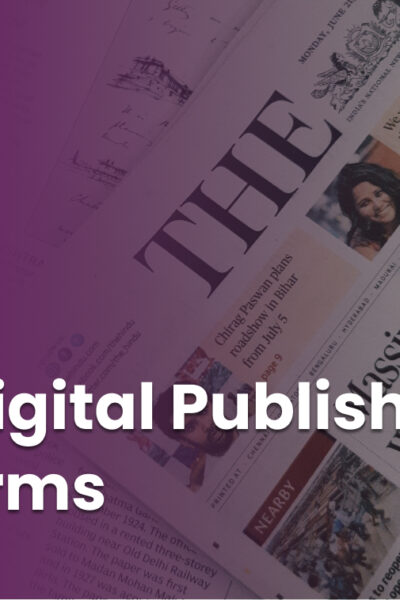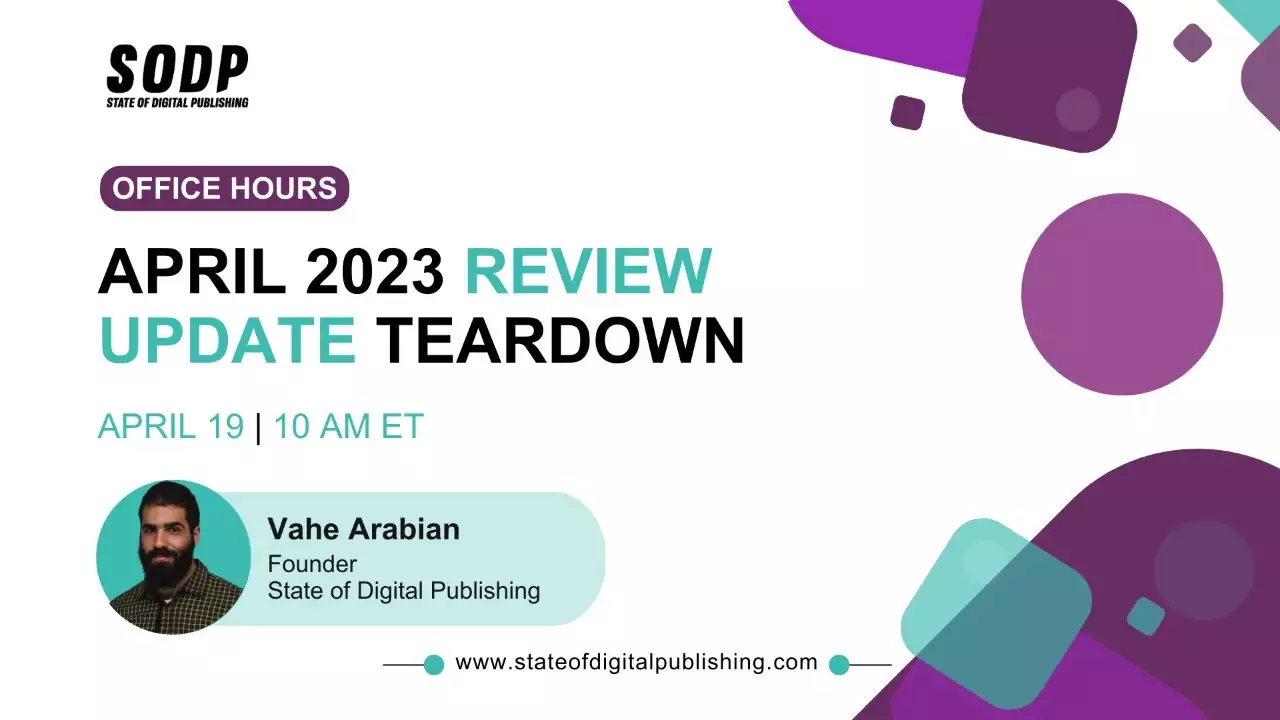In May 2024, State of Digital Publishing (SODP) hosted Monetization Week – an online event for digital publishing and news media professionals.
This article is based on the summary of key learnings of a presentation by Vahe Arabian, Founder of SODP.
When developing sustainable first-party strategies, it is important that publishers define their approach – how they are going to build the foundation of their first-party data.
It involves three key steps:
- Data Collection: Three data collection points can help strengthen publishers’ first-party strategy – audience behavioral data, campaign data, and CRM data.
- Data Consolidation: Publishers should strive to unify the collected data on a Customer Data Platform (CDP) to create a complete, coherent view of each user in their database.
- Execution: In this phase, publishers have multiple avenues to engage with their audience and monetize their products/content. The main pillars worth considering are:
- Email Automation: If publishers have email collection methods, they can use automation to send targeted messages to specific users at the right time to elicit desired responses.
- Audience Growth: Publishers can use the collected data to expand their audience base and generate revenue through cross-selling, lead nurturing, targeted ads, etc.
- Content Personalization/ Recirculation: This involves using first-party data to create personalized content for each user and thus encourage further engagement.
First-Party Data Strategies to Consider
1. User Registration
This is probably the most straightforward of all data acquisition strategies out there. Users often get access to a free newsletter or other similar content in exchange for providing their email IDs and other personal data.
Best practices here include the following:
- Providing readers with a clear idea about the various product offerings on the sign-up page.
- Giving free previews of each product with a single click to manage user expectations.
- Positioning the product with the highest selling potential in the middle of the stack.
- Using multiple sign-up prompts across the length of a landing page.
The South China Morning Post and Milk Road are two websites that exhibit most of these user registration best practices.
2. Single Sign On (SSO)
Manually typing personal details in the sign-up form is a minor yet still significant friction in the user registration process. This can be easily sidestepped by giving readers the option to sign in with a single click, using an existing account on Google, Facebook, or other established platforms.
The SCMP website is again a good example of SSO done right. They also offer a 1-month free subscription when readers use this route.
3. Progressive Profiling
During the sign-up process on the SCMP website, it will provide users with a menu with a wide range of topics. Users can select the topics that interest them to get more personalized content suggestions from the website.
This is a form of progressive profiling – a process where a publisher slowly gathers information about a user over time by making incremental requests. This feels less intrusive than asking a ton of questions up-front and can result in an enhanced user experience.
4. Event-Based Tracking
Talking from an events POV, publishers want to be able to track pretty much any interaction that’s happening on their website. Key examples around that can be content sharing, Google Analytics 4 (GA4) by default, or heat mapping tools like Clarity.
An example of potentially relevant interaction is commenting. Users who are more loyal to a particular brand are more likely to participate in online discussions.
Brand loyalty is a highly useful piece of data from a marketing perspective.
5. Click Attribution
Links provided by affiliate networks to publishers contain a unique ID that is used to deliver affiliate commissions on successful conversions. When a reader clicks this link, this action is recorded by the network and is considered GDPR-compliant first-party data.
On PhoneArena, the affiliate link uses geo-targeting to ensure that readers are taken to an appropriate local e-commerce site. The pricing data on the link is also localized for a friction-free buying process.
6. Polls, Surveys, and Reviews
Polls and surveys can be effective ways to boost audience engagement and add to publishers’ progressive profiling efforts.
With the rise of AI tools, the process has become drastically simplified and automated. News Clues is such a tool that many platforms are trialing it at the moment.
7. Publisher Provided Identifiers (PPIDs)
PPIDs are part of Google’s wider plan to replace invasive third-party cookies with privacy-friendly tracking on the Google Ad Manager (GAM).
Content from our partners
Publishers that predominantly use GAM360 should ensure that PPIDs are enabled in their setup to be compliant for the third-party cookie depreciation. If publishers are working with a programmatic ad-tech partner, it’s best to ask them to have the same setup so that publishers get continued access to the data pass-throughs.
8. Gamification
Publishers can use competitions and contests to increase audience participation and collect first-party data. A sweepstakes where anyone can participate by providing their email or other details is a good example.
Campaignware is a platform that offers a wide array of readymade templates for gamified leaderboard contests and surveys to publishers.
Watch the full session:
Download the ebook of learnings from Monetization Week here.












